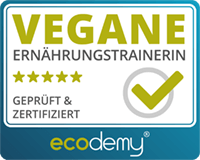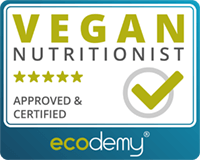Ideal Healthy Vegan Eating
An ideological approach to eating ~2000 kcals of plants in a day with valuable tips

Visit activeplantbased for professional help and plant-based nutrition training.
All key points
- You should be drinking about 2-3 litres of water a day. Don’t let yourself go thirsty. Sip water throughout the day. The more you weigh and exercise, the more water you will need.
- 3 servings of vegetables and 2 servings of fruit are recommended.
- Consider eating some servings of the fruits & veggies raw.
- Your daily protein intake should be at least ~1g protein per kg body weight.
- Enrich your breakfast with fruits, nuts, seeds, sprouts or microgreens.
- When snacking, don’t eat straight from the package. Instead, serve yourself however much you think is right for you, and put away the rest.
- Vitamin B12 supplements are a necessity for vegans.
- Other supplements to consider are vitamin D in winter, iodine and sodium.
If you had an optimal day of eating 2000kcals in a way the plant-based nutritional science suggests, this is what your day would look like;
Water and other drinks

Liquids first
Your daily intake of fluids would look like this:
- ~three litres of water
- mineral water with more than 400mgs of calcium
- low-energy drinks (hot/cold tea, for instance)
- watery fruits and vegetables such as watermelon and salads
How much fluid do I need?
This depends on many factors, but generally speaking, the more you weigh, the more hydration you need.
- Geographical environment: Obviously, hot and sunny areas will make you sweat, and you will need to drink more than in cold and frosty weather.
- Exercise: The more you exercise, the more water (and electrolytes) you will need. Running a marathon will make you lose more sweat than sitting in your office.
- Overall health: When you’re feeling sick and having a fever, vomiting, or diarrhoea, you will need to drink more. Sickness always requires special care. Speak to your doctor about increased fluid intake to prevent your body from dehydration.
- Pregnancy & breastfeeding: Growing a human is a lot of work. Increasing daily water intake is necessary since the mother’s blood volume increases significantly during pregnancy. This is a normal process. Breastfeeding is essential for the baby’s water intake.
Tricks and indicators of drinking enough
- Keep a big refillable bottle of water near you at all times. You could have a bottle at home and work, so you don’t have to carry it back and forth.
- The colour of your urine tells you a lot. The lighter the urine, the better.
Physiologically speaking, light yellow or colourless means you drank enough and your intake is adequate. Dark yellow means you should drink more.
It’s not always accurate since red beet, berries or fava beans can change the colour of your urine. - Never feeling thirsty is a good indicator of proper hydration. If you wait until you’re thirsty, it’s too late. Sip water regularly throughout the day, even if you don’t feel thirsty.
- Drink water before, during, and after meals.
- Drink water before, during and after exercising.
Food and other healthy stuff

How many servings of vegetables and fruits should I eat?
This is how much you should be eating in a day, ideally speaking.
- 400g/d vegetables (3 servings)
- 250g/d fruits (2 servings)
- whole fruits > fruit juices
Consider eating some servings of the fruits & veggies raw.
Whole fruits and vegetables provide saturating fibres and other nutrients, which otherwise get left behind during the extraction process. Directly pressed fruit and vegetable juices (not from concentrate, no added sugars) are fine, occasionally. They’re a good source of vitamins but cause a sugar spike.
The many combinations, variations and preparation styles of fruits & vegetables are endless. You might head over to our recipe section for inspiration or use your search engine for a vegan [insert vegetable of your liking here] recipe :)
Energy & protein sources

How many servings of protein and energy should I get in a day?
Energy sources:
- 375g/d whole grains or potatoes (3 servings)
Protein sources:
Supposing that the intake is at a minimum of ~1g protein per kg body weight, this is what your daily plate would look like:
- 100g tofu, tempeh, seitan or lupine products
Depending on the source, the recommendation for protein fluctuates somewhat between 0,5g and 3g per kg bodyweight.
- 50g legumes,
like beans, peas, chickpeas, lentils…
- Sprouts
- Microgreens
- Herbs
Milk, and yoghurt alternatives for more protein in a day:
- 100–200g soy, grain or nut drinks or yoghurts
Wholesome fats

What should I eat for an adequate intake of fats?
Healthy natural fats:
- 30–60g/d mix of nuts and seeds
Other fats:
- 2–3 tablespoons of vegetable oils and fats
Choose DHA-enriched vegetable oils, as they are a supply of essential fatty acids.
Breakfast
Some of us love to start our mornings with a good bowl of oatmeal.
Consider alternating with a bowl of yoghurt and add fruits, nuts and seeds of your liking on top, and you’re good to start your day.
If you like to make bread and prefer savoury, you can consider sprinkling sprouts or microgreens on top.
What about snacks?
- snacks
- sweets
- alcohol
You don’t need to cut back and live a snack and sweets-free life forever to live healthily. Regulation is important.
Preventing overeating snacks and sweets
Put unhealthier snacks into cupboards and hidden places so they’re not directly visible. Instead, place a fruit bowl and nuts, seeds or dried fruits visibly on your counter to snack healthily.
Suppose you choose to eat e. g. chips or crisps, don’t bring the entire package with you. Get a small bowl, and fill the bowl as much as you think is alright for you. Then eat slowly and hide away the rest of the package.
If you decide to cut snacks out 100%, do not buy them in the first place.
Also, snack slowly and enjoy every bite.

Want to choose healthy snacks instead?
Prepare a container with carrot or bell pepper sticks and have a quick bite when you’re hungry. Vegetable sticks are superb when watching movies.
Popcorn is one of the easiest, cheapest and healthiest snacks. Corn is available almost everywhere and is widely popular. Consider making popcorn with little oil and salt in a pan with a lid.
Supplements

An absolute necessity for vegans
- year-round supply of Vitamin B12 in a vegan diet
Supplements to consider for everyone, regardless of diet
- Vitamin D supply in winter from October to March (depends on the geographical region)
- Iodine (through iodised table salt, sea salt enriched with iodine-containing algae or seaweed with a defined iodine content)
- Selenium (found in Brazil nuts)

